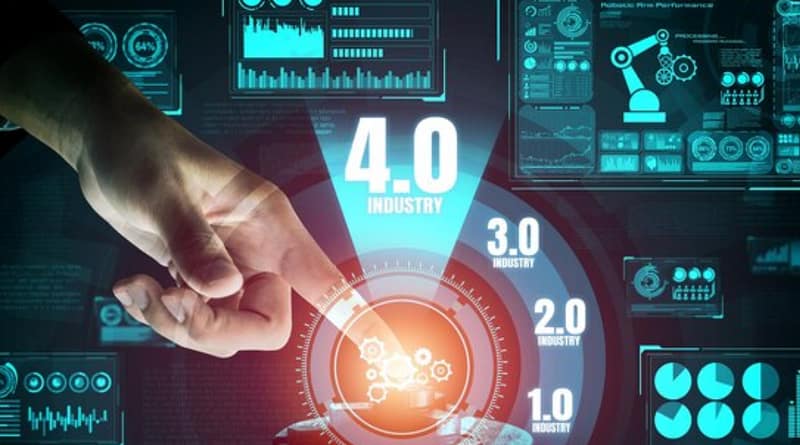The Evolution of Industry 1.0 2.0 3.0 and 4.0
Throughout history, the industrial revolution has changed how things are made and how they are sent to people. In the history of industry, from the early days of steam power to the digital change, each stage has brought about new technologies and improvements. This piece will talk about the four main industrial revolutions: industry 1.0, 2.0, 3.0, and 4.0. It will look at their similarities and differences, as well as how they have changed manufacturing.
Industry 1.0: The Era of Steam
In the 18th century, there was the first industrial revolution, also called “industry 1.0.” It was the change from a handicraft economy to a manufacturing economy driven by steam. The invention of steam power sparked this change by changing the way people traveled and made things.
Even though steam power had been around for a while, it wasn’t until industry 1.0 that it was used in manufacturing, which was a big step forward. Mining, farming, crafts, and glassmaking were some of the industries that benefited the most from the invention of steam-powered machines. It made it possible to make more goods, which raised output and efficiency.

Industry 2.0: The Technological Revolution
Industry 2.0, the second industrial revolution, took place in the late 1800s and early 1900s. Electricity and the assembly line, which changed the way mass production was done, were big events during this time.
The invention of electricity led to big improvements in the way things were made. Machines were driven by electricity, which made them easier to use and cheaper. Henry Ford was the first person to use an assembly line to make it easier to divide up work and make a lot of cars and other things.

Industry 3.0: The Digital Revolution
Industry 3.0, also called the “digital revolution,” happened in the 1970s. With the help of computers and electronics, this revolution was marked by the automation of industrial processes.
Computers became an important part of making things, which led to the development of the complex technology we use today. Even though computers back then were bigger and not as powerful as computers today, they made it possible for industrial processes to be automated. This technology made things more efficient and productive, and it also made working conditions better by cutting down on manual labor.

Industry 4.0: The Rise of Smart Manufacturing
Industry 4.0 is the current stage of industrial growth. It is when advanced technologies and communication systems are used in manufacturing processes. It’s also called Industry 4.0 or the age of smart manufacturing.
The Internet of Things (IoT), cloud computing, cognitive computing, and cyber-physical systems are all being used together in this change. These technologies make it possible to build “smart factories,” which are places where tools, storage systems, and production areas can talk to each other, share information, and run themselves without any help from a person. Systems that are linked together can analyze data in real time, be customized, and help handle the supply chain better.
Industry 4.0 has the ability to make big changes in the way things are made. Self-organized logistics can adjust to sudden changes in production, and smart machines can guess when they will break down and start maintenance on their own. Its goal is to make it easier for people and machines to work together, using the best parts of each to make output more efficient.

The Differences Between Industry 1.0, 2.0, 3.0, and 4.0
Each industrial revolution has its own unique characteristics and impact on the manufacturing industry. Here are the key differences between industry 1.0, 2.0, 3.0, and 4.0:
| Industrial Revolution | Characteristics | Impact |
| Industry 1.0 | Introduction of steam power and mechanization | Increased productivity and efficiency in industries such as mining, agriculture, textiles, and glass |
| Industry 2.0 | Introduction of electricity and assembly line production | Mass production, improved efficiency, and the rise of industries like automobiles |
| Industry 3.0 | Automation through computer technology and electronics | Improved productivity, reduced manual labor, and the foundation for the digital age |
| Industry 4.0 | Integration of advanced technologies like IoT, cloud computing, and cognitive computing | Smart factories, real-time data analysis, customization, and improved supply chain management |
From industry 1.0 to industry 4.0, there has been a constant flow of new ideas and changes. We are on the verge of industry 5.0, which sees people and machines working together in harmony. It is clear that the future of manufacturing will hold even more exciting opportunities.
In conclusion, the industrial revolutions changed how we make and spread goods. They also led to big steps forward in technology and a complete change in the way things are made. Industry 1.0 brought steam power, Industry 2.0 brought electricity and mass production, Industry 3.0 used computers to handle tasks, and Industry 4.0 started the era of smart manufacturing. Each revolution built on the ideas of the one before it, which is how we got to where we are now, with improved technology and connectivity. With industry 5.0 coming soon, the future of production looks like it will be a fascinating mix of smart automation and human creativity.






